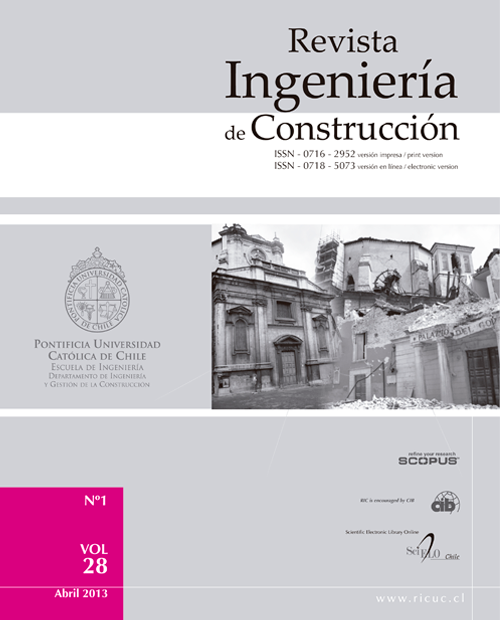Estimation of random uncertainty of the seismic interstory drift ratio of reinforced concrete frames taking into account the variability of concrete elasticity modulus in Bogota
DOI:
https://doi.org/10.4067/S0718-50732013000100006Keywords:
Seismic drift, statistical analysis, laboratory tests, computer simulationsAbstract
Based on the modulus of elasticity of concrete (E) and the geometry of the structural elements, the displacements of reinforced concrete structures are assessed by designers. The authors compiled and statistically analyzed the information of concrete strength tests, f`c with measurement of E (more than 1500 tests). Afterwards, a design of 5-story buildings was done following the specifications of the NSR-10 (AIS, Asociación Colombiana de Ingeniería Sísmica, 2010) and using two of the design spectrums of the recent seismic micro-zoning of Bogota (year 2010). With these buildings and with 1500 random numbers for f `c and E (based on the statistic analyses of laboratory tests), 6000 computer simulations, varying E and f´c, was done to determine the seismic drifts (as a percentage of the interstory distance) of the buildings. Seismic drifts were determined from spectral modal analyses and equivalent horizontal force analysis. In agreement with the results, the seismic drifts would be in average 147% of the seismic design drifts. Additionally, in average, 67 of each 100 buildings of five floors designed and constructed in Bogota with the NSR-10 would have seismic drifts higher than 1%. For that reason, the authors propose to modify the formula of the elasticity modulus included in the NSR 10 (at least for Bogota), in order to make a safer and reliable estimation of E and the seismic drifts.


